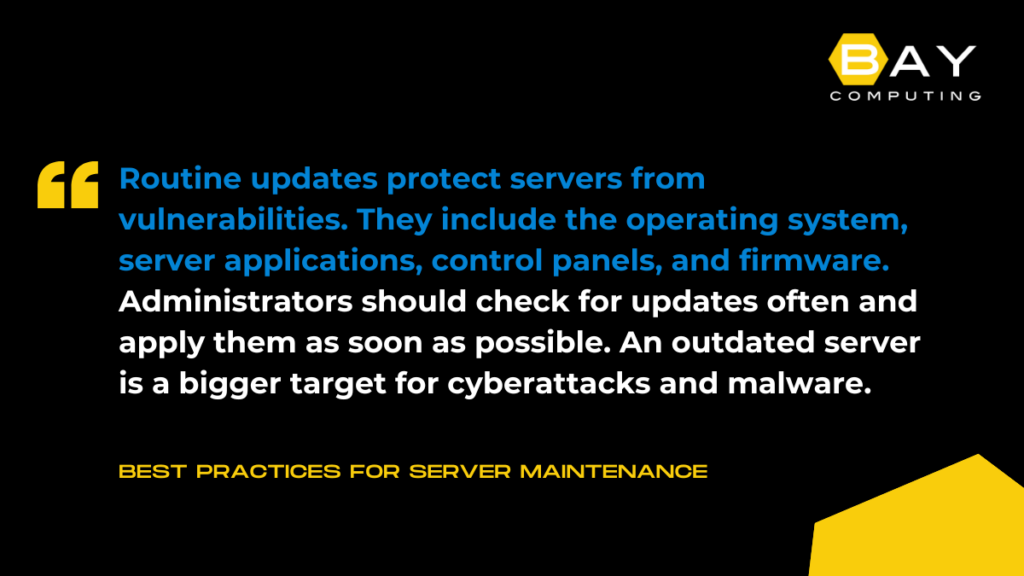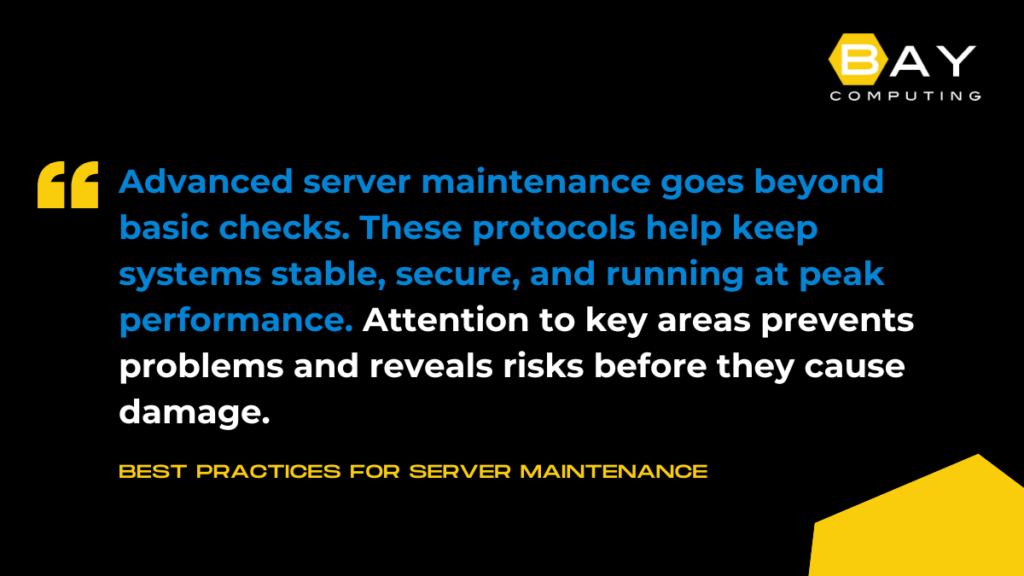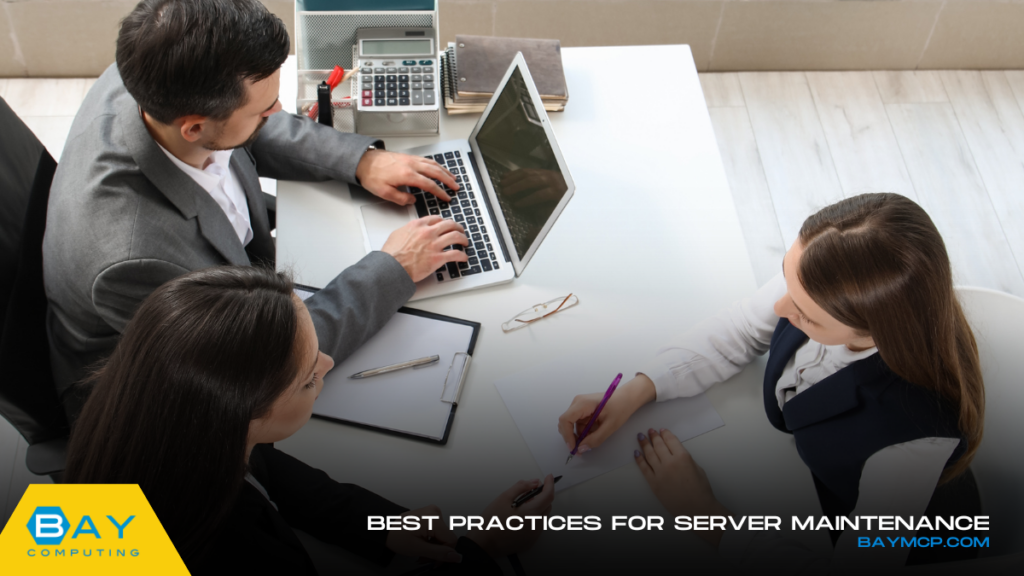Best Practices for Server Maintenance
Regular server maintenance is essential to keep systems secure, reliable, and running at their best. Taking care of servers helps prevent downtime, protects sensitive data, and extends hardware life. For any business or IT team, following good maintenance routines keeps services available and avoids costly repairs.
A strong service maintenance plan covers key tasks like hardware checks and software updates. It also includes monitoring performance and managing backups. Without these steps, problems can go undetected and quickly slow down a network. By following clear server maintenance best practices, organizations can avoid many common issues.
Anyone looking to protect their business operations or streamline IT workloads benefits from knowing the basics. With the right approach, server management becomes easier and more effective.
Essential Server Maintenance Strategies
Server maintenance relies on clear steps to keep systems secure, reliable, and high-performing. Attention to software updates, physical inspections, data protection, and speed keeps downtime and risk to a minimum.
Regular Software Updates

Routine updates protect servers from vulnerabilities. They include the operating system, server applications, control panels, and firmware. Administrators should check for updates often and apply them as soon as possible. An outdated server is a bigger target for cyberattacks and malware.
Using an update schedule makes it easier to keep track of patches. Some admins use automation to ensure no critical updates are missed. Whenever possible, updates should be tested on a non-production system before going live. This helps avoid unexpected issues that could bring down important services.
Keeping backups before making changes is also necessary for safety. Clear documentation of updates, including the date and version, helps track changes and troubleshoot problems. This type of documentation is part of regular best practices.
Hardware Health Monitoring for Server Maintenance
Physical components are just as important as software. Servers depend on hardware like hard drives, memory, fans, and power supplies. If these parts fail, data loss and downtime may occur.
Admins should perform regular visual inspections. Tools can monitor temperature, CPU load, fan speed, and disk health. Many server management panels include alerts for abnormal events. For example, smart monitoring systems warn if a hard drive is showing early signs of failure.
Replacing worn-out parts early reduces the risk of surprise outages. Logging each hardware check lets staff spot trends or repeated issues. For companies with many servers, a routine schedule for checks and replacements is key to smooth operations. More on hardware maintenance best practices is available for deeper details.
Backup and Recovery Planning

Each server should have a clear backup plan. Backups protect important data from hardware failures, security attacks, or human errors. There should be a set schedule for full and incremental backups.
Backups should be stored in multiple locations, either on separate hardware or offsite solutions. Testing backups is just as important as making them. Regularly checking that restore processes actually work helps ensure data is retrievable in an emergency. Some organizations keep a written disaster recovery plan to guide staff through each step during a server failure.
Backup types, frequency, and retention plans should be adjusted according to business needs. Well-documented processes make it easier to hand off maintenance or recover quickly in case of trouble.
Performance Optimization Techniques
Servers can slow down for many reasons. Monitoring and optimizing performance prevents slowdowns and keeps users satisfied. Common tasks include deleting unnecessary files, clearing log files, and defragmenting storage drives if required.
Resource monitoring helps admins see if memory, CPU, or network usage is too high. High resource use may mean more resources are needed or existing processes should be tuned. Server load balancing can spread traffic evenly across several machines.
Regular reviews of the configuration help spot outdated settings or bottlenecks. Using tools for automated monitoring and alerting can help identify issues before users are affected. More about maximizing performance and other server maintenance best practices is provided for further insight.
Advanced Server Maintenance Protocols

Advanced server maintenance goes beyond basic checks. These protocols help keep systems stable, secure, and running at peak performance. Attention to key areas prevents problems and reveals risks before they cause damage.
Security Patch Management
Security patch management is essential for keeping servers protected against malware, exploits, and vulnerabilities. Admins must track new patches from hardware and software vendors, then quickly test and install them. Delays in patching increase the risk of compromise.
A clear process is needed. Step-by-step testing in a staging environment helps catch issues before updates reach production servers. IT teams also need a formal tracking system to record patch status and timelines.
Best practices include:
- Creating an inventory of all applications and operating systems
- Subscribing to vendor update alerts
- Scheduling regular patch cycles
- Keeping detailed patch records
- Verifying patch success after installation
Timely patching reduces the risk of breaches, data loss, and service outages. Regular audits verify patches weren’t missed.
Automated System Audits
Automated system audits can quickly review server configurations, user accounts, permissions, and software changes. These audits catch misconfigurations or unauthorized changes that could lead to security risks or downtime.
By using audit tools, IT teams schedule scans at set intervals without manual work. Automatic alerts notify staff if something unexpected happens, such as new user accounts or unusual file changes.
Key areas for automated audits:
- Password policy compliance
- Authenticated user review
- Software and hardware changes
- Configuration drift detection
- File and folder permission checks
Routine audits help find and fix issues before they affect operations. Automation means nothing is overlooked or skipped. Organizations can extend server lifespan and improve reliability with solid server monitoring and maintenance practices.
Resource Usage Analysis

Resource usage analysis means tracking how much CPU, memory, disk space, and network bandwidth each server uses over time. These metrics find bottlenecks and identify places where more resources are needed.
By reviewing patterns, IT teams spot trends such as fast-growing storage folders or increased processor load. This helps with future planning and avoids unplanned outages due to lack of resources.
A good approach includes:
- Setting thresholds and alerts for key metrics
- Reviewing performance logs regularly
- Forecasting growth and capacity needs
- Addressing abnormal spikes or drops
Resource management ensures servers stay within safe limits, supporting steady performance.
Keep Your Servers Healthy, Secure, and Always Running
Server issues don’t wait—and neither should your maintenance strategy. Whether you’re managing one server or a full data center, Bay Computing helps businesses ensure uptime, secure critical data, and optimize performance with proven best practices. Our expert team handles updates, backups, performance checks, and risk prevention—so you can focus on growing your business.
Contact Bay Computing today and get proactive server management that protects your operations 24/7. Let us keep your servers and your business running strong.




